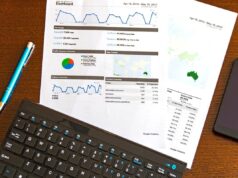
As prospectors mined for gold in the 19th century, today, you’re mining for data on your website. It’s essential for understanding your audience, improving user experience, and driving growth.
But do you know what data to collect or what tools and methods? Are you aware of the legal aspects surrounding data collection?
You’ll soon find that, just like those old prospectors, your data has a treasure if you know how to find it.
Understanding website data collection

To fully grasp the concept of web data collection, you’ll need to delve into how websites track, gather, and use your data while browsing the internet. This process is systematic, often utilizing sophisticated tools.
The collected data includes browsing habits, preferences, and frequently visited pages. Web data collection is mainly about gathering data and observing user behavior using web analytics (www.quantummetric.com/digital-analytics/web-analytics/).
Every click, search, and interaction provides valuable information. For instance, your device’s IP address provides geographical third-party data, while cookies track browsing activity and store information about your site preferences and login details.
Importance of data collection
Now that you know how websites collect and utilize web data, explore why this process is crucial. The data collection process is the backbone of your website’s success. Through this process, you gather valuable information about your website traffic, learning what works and what doesn’t.
It is more than just numbers and statistics. It’s a way to understand your audience’s behavior, preferences, and needs. By analyzing web data, you can identify trends and patterns, which can guide the development of your marketing strategies and website improvements.
If you’re not collecting data, you’re flying blind, making decisions based on guesswork rather than hard facts.
Types of website data to collect
Collecting web data allows you to focus on retrieving target data points that can drive growth and improve decision-making, which includes demographic information, behavioral patterns, and user preferences.
This type of data can reveal who your audience is, what they’re interested in, and how they interact with your site. Web data enables companies to understand user behavior and tailor their offerings accordingly.
Next, there’s web scraping data, which involves extracting large amounts of data from websites and transforming it into an understandable format. It’s beneficial for competitive analysis and market research.
Finally, you have data collection from network traffic. This type of data collection network traffic can provide insights into the quantity and quality of traffic to your site, the source of your traffic, and the pages visitors are most interested in.
Understanding and collecting these types of qualitative data can provide valuable insights, helping you to make informed decisions and, ultimately, improve your business performance.
Tools for website data collection

Having understood the types of data your website can collect, it’s equally important to consider the data collection tool that can assist in this process, providing you with the information you need to enhance your business performance. Web scraping tools are vital to gathering data efficiently.
These tools allow you to collect web data independently and track various metrics like bounce rates, session durations, and conversion rates, providing invaluable insights into your website’s performance.
It’s crucial to utilize data collection tools effectively to maximize the value of your website data. Remember, the goal isn’t just to collect data and derive actionable insights to drive your business growth.
Legal aspects of data collection
While you’re harnessing the power of data collection tools, it’s crucial to be aware of the legal aspects that govern website data collection to ensure compliance and maintain the trust of your users.
The data management cycle must be guided by legal and ethical principles, with its steps to collect, process, store, and discard data.
The data collection process should remove any unnecessary data to limit legal exposure, which is where compliance bright data comes into play, helping you ensure that only essential and legally compliant data is collected and retained, thereby reducing risks.
Implementing data collection methods
Now that you know the legalities surrounding data collection, it’s time to put this knowledge into practice by implementing effective data collection methods on your website. It’s worth considering data collection automation to streamline the process.
Implementing these tools allows you to efficiently gather information from multiple target sites, not just your own.
You’re not just collecting data but utilizing web data to its fullest potential, which can include analyzing user behavior, identifying trends, and making data-driven decisions to improve your site and business.
Analyzing collected website data
Once you’ve amassed a solid cache of website data, it’s time to dive into the analysis, turning raw numbers into actionable insights to drive your online business forward. Analyzing web traffic is a crucial step in this process.
Bright data tools can be pivotal in this process, enabling you to quickly navigate the sea of data. These tools can help you identify which pages attract the most visitors, where they are coming from, and what actions they take on your site.
Leveraging data for business growth

After analyzing your website’s data to understand user behavior, it’s essential to leverage these insights strategically to fuel your business growth.
The process of leveraging data for business growth starts with website data collection. This data collection includes a smart data subset consisting of various user activities, preferences, and interactions.
By understanding the patterns and trends in this data, you can make informed decisions to enhance your services, improve user experience, and ultimately increase your revenue.
Data providers play a crucial role here. They offer valuable insights that can facilitate your goal of leveraging data for growth.
Best practices in data collection
It’s vital to adhere to best practices that ensure accuracy, efficiency, and relevance in your gathered information to optimize your data collection strategies. You’re seeking a complete data trove that provides actionable insights into your audience’s behavior.
Understand that web data collection isn’t a one-size-fits-all process. Tailor your methods based on the specific needs of your website or business. Use data collection networks. These platforms can help automate the process, reducing the occurrence of human error.
Final thoughts

So, you’ve made it through the labyrinth of website data collection. Now, don’t just sit on that goldmine of data.
Analyze, make sense of, and use it to grow your business. But remember, the internet may be vast, but privacy still counts. Don’t be a data hoarder, be a data hero. After all, it’s about having data and using it wisely.












